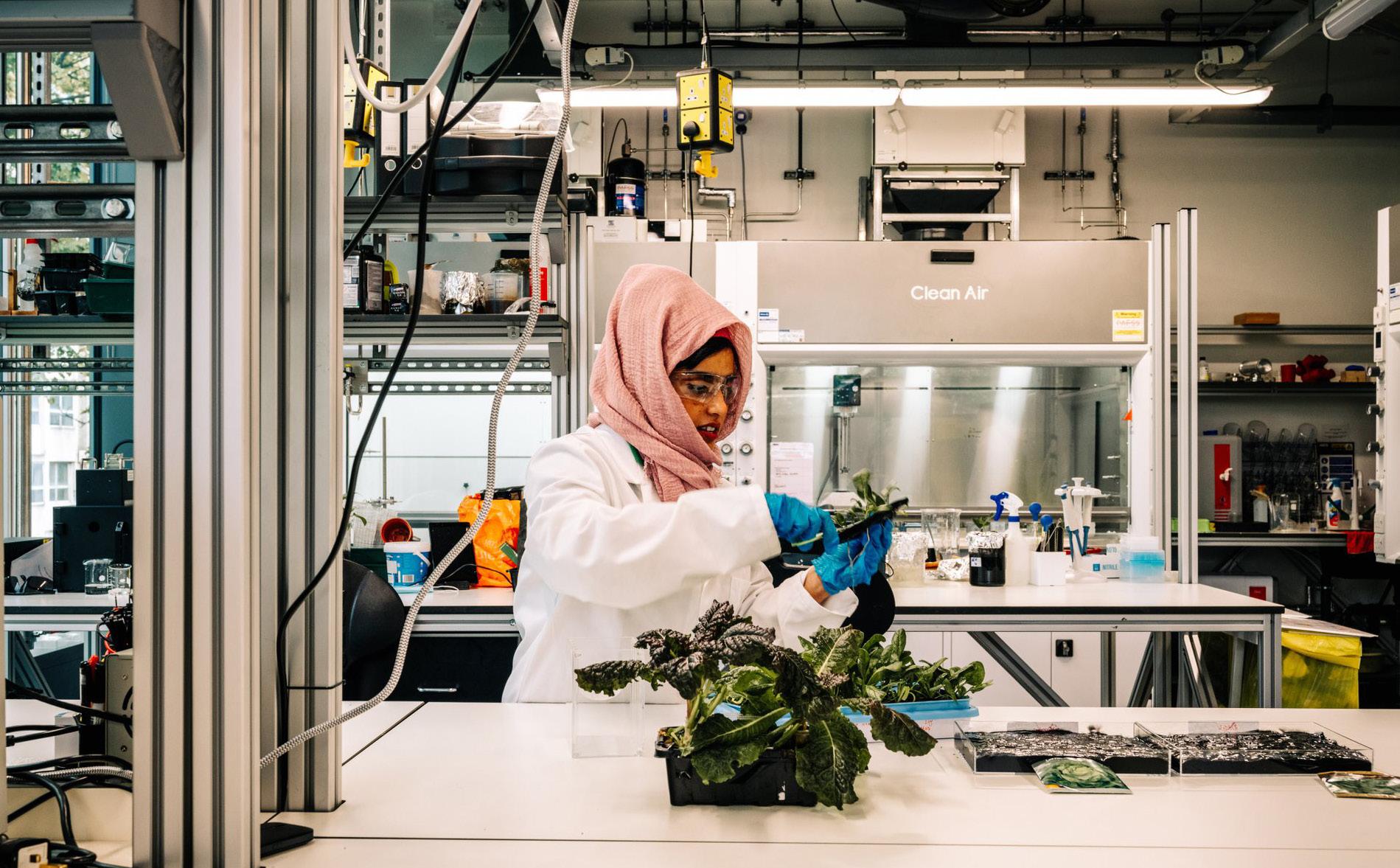
4 minute read
Building Graphene City: 2D Materials Infrastructure in Greater Manchester
Building Graphene City
Graphene City is an ambitious vision from The University of Manchester, that aims to create a thriving knowledgebased economy around this revolutionary discovery and associated research in advanced materials.
Advertisement
Graphene’s vast potential will be fully realised by creating a critical mass of scientists, manufacturers, engineers, innovators and industrialists in Greater Manchester, the home of graphene. This innovation ecosystem has at its core the research-focused National Graphene Institute and the more commercially-facing Graphene Engineering Innovation Centre.
James Baker, CEO of Graphene@ Manchester, said: “We are part of a Manchester model of innovation that is collaborative, meets global challenges and is inclusive – the graphene and 2D materials accelerator based at the University is an exemplar of how Greater Manchester offers a world-class model of translational research that will meet economic, environmental and societal priorities at a cityregion, national and international level.
“Ultimately Greater Manchester is being recognised as an R&D partner of choice at a global level.”
The National Graphene Institute (NGI)
£61 million has been invested into the NGI at the University of Manchester, which is focused on research into the applications of graphene. More than 90 companies are already working with over 350+ researchers, engineers and applications specialists shaping the material’s future development.

The Henry Royce Institute
The Royce is the UK’s national institute for matrials science research and innovation. It is the hub of a network of partners including the universities of Oxford, Cambridge, Imperial College London, Sheffield and Leeds. Research specialisms include 2D materials, advanced metals processing and atoms to devices. The Royce gives businesses access to state-of-the-art equipment and facilities and is continuing to grow available assets with its flagship building opening in 2021.
Graphene Engineering Innovation Centre (GEIC)

Opened in 2018 with funding from GM LEP and Masdar the GEIC is critical for the development of commercial applications for graphene and other 2D materials. The facility focuses on pilot production and commercialisation within industry. Companies take space in the GEIC allowing, for example, for the use of mixing labs, extruders and an autoclave to pilot produce composite components. Labs for battery production, printed electronics, membranes and sensors are also on site.

Manchester Metropolitan University’s Advanced Materials & Surface Engineering Research Centre develops materials for hydrogen fuel cells, batteries, sensors, electrolysers, amongst others, which can be screen printed or 3D printed. Specialisms include new catalyst materials for the low temperature removal of methane from diesel truck exhausts and photocatalyst materials; water treatment and disinfection or clean hydrogen from water splitting; along with surface coatings for low friction and wear, recyclable packaging and oxidation resistance, etc.
Made Smarter
The Made Smarter programme in the North West is being led by Greater Manchester and is paving the way for the UK to be the global leader in the creation, adoption and exportation of advanced digital technologies. This Department for Business, Energy & Industrial Strategy sponsored programme has been hugely successful in enabling companies to get to grips with the technologies, expertise and skills needed to embed new tools and ways of working into their manufacturing processes. Improving productivity through digitalisation of manufacturing is a strategic priority for GAMMA. Made Smarter is an exemplar intervention working with SMEs to map out their digitalisation journey and supporting them through grants, student internships, advice on workforce development, and developing the leadership and management skills needed to ensure that they achieve their maximum potential for innovation and growth. The programme has been extended in the North West and the model being rolled out in three other UK regions, over the next 12 months.

Resources
Video:
• Made in Manchester: an intro to graphene
Graphene: Made in Manchester - Bing video
• Inside the Graphene Engineering Centre
Inside the Graphene Engineering Innovation Centre - YouTube
• Graphene@Manchester YouTube Channel
The University of Manchester – The home of graphene - YouTube
• GEIC webinar series
GEIC webinars - Challenges and Opportunities in Graphene - YouTube

MATERIALS RESEARCH
Manchester 2038 as imagined by illustrator and designer Barney Ibbotson.
A future of vertical urban farms; rainwater purification units utilising graphene membranes; road surfaces which defy potholes and charge the batteries in the driverless lightweight vehicles which pass along them.
The air is clean and people have a vast array of career opportunities in innovative industries that have not yet been imagined. Transportation is net carbon neutral, integrated affordable and efficient.
Drones - built in the image of Manchester’s famous worker bees - buzz through the sky. The cityscape remains familiar but incredible new architectural structures are possible due to enhanced building materials which are lighter, stronger and conduct heat and power. The legendary space elevator is a reality.
Healthcare has been transformed by the ability to produce intricate replacement body structures.
As a result, Greater Manchester is a magnet for talent and investment and the cityregion’s efforts to tackle global challenges is supporting the fight against climate change.






